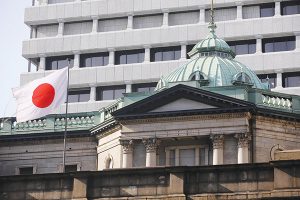Bloomberg
The Bank of Japan’s (BOJ) decision to double its 10-year yield ceiling was meant to improve market functioning. So far it’s triggered even heavier intervention from the central bank, threatening to reduce liquidity further in the local bond market.
The BOJ announced a fourth day of unscheduled bond buying, offering to buy unlimited amounts of two- and five-year notes and to purchase ¥600 billion ($4.6 billion) of one-to-25 year bonds. The announcement came in addition to its
outstanding daily offer to buy unlimited quantities of 10-year securities and those linked to futures at 0.5%, the new cap for benchmark yields.
The move came despite a strong start to the year in global bond markets with Treasuries surging and German bunds rallying on signs of slowing inflation. But the purchases failed to stop the selloff in Japan’s benchmark bond with yields closing 4 basis points higher at 0.45% amid concern that Thursday’s auction of a new 10-year note will see weak investor demand.
December’s yield-curve shift has spurred more bets from traders the BOJ will lift its cap further or scrap it altogether as inflation picks up in Japan. That sparked a selloff in debt, requiring even more bond purchases from the central bank to keep yields in check.
The BOJ conducted similar purchase operations between December 28 and 30, buying a total of ¥2.3 trillion of bonds.
“The BOJ is showing an abundance of caution as bets on higher JGB yields might have become too one-sided,†said Eugene Leow, a fixed income strategist at DBS Bank Ltd in Singapore.
 The Gulf Time Newspaper One of the finest business newspapers in the UAE brought to you by our professional writers and editors.
The Gulf Time Newspaper One of the finest business newspapers in the UAE brought to you by our professional writers and editors.
